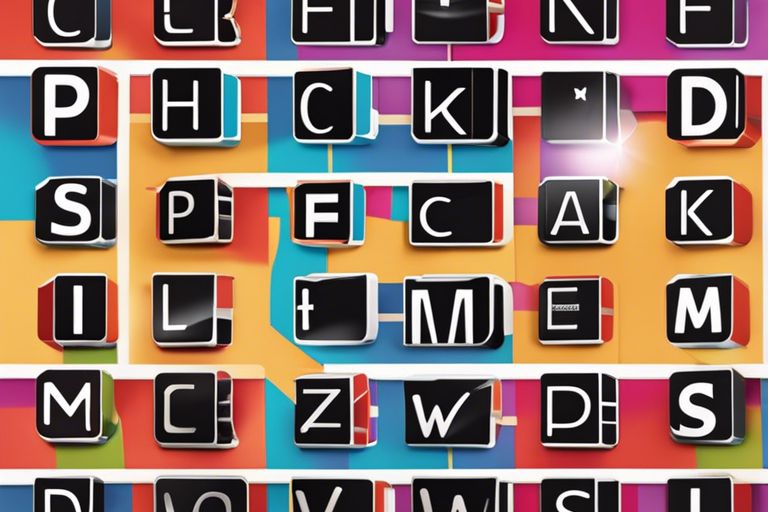Most educators agree that incorporating phonics in early reading instruction is crucial for laying a strong foundation for literacy skills. Phonics, which teaches the relationship between letters and sounds, helps young learners decode words and improve their reading fluency. By mastering phonics, children can enhance their reading comprehension, spelling abilities, and overall literacy development. Research consistently shows that phonics instruction leads to improved reading outcomes, making it an essential component of early literacy education.
Key Takeaways:
- Improves reading accuracy: Phonics helps children decode words by recognizing the sounds each letter makes, leading to better reading accuracy.
- Enhances spelling skills: By understanding letter-sound relationships, children can spell words more effectively using phonics rules.
- Builds vocabulary: Phonics instruction introduces new words through decoding, expanding children’s vocabulary and comprehension skills.
- Promotes fluency: With phonics, children can read more smoothly and quickly as they recognize common letter patterns and sounds.
- Increases reading confidence: Mastering phonics gives children the tools to tackle unfamiliar words independently, boosting their confidence in reading and learning.
The Fundamentals of Phonics
Definition and Key Concepts
With the fundamentals of phonics, children learn to associate sounds with symbols and how these sounds come together to form words. This method emphasizes the relationship between letters and their corresponding sounds, helping children decode words as they read. Key concepts in phonics instruction include letter-sound correspondence, blending, and segmenting sounds within words.
By understanding the principles of phonics, students develop the foundational skills needed to become proficient readers. Phonics instruction teaches children to recognize the building blocks of language, enabling them to decode unfamiliar words and become more confident readers as they progress.
Types of Phonics Instructional Approaches
Any phonics instructional approach aims to teach children the relationship between sounds and the letters that represent them. There are two primary approaches: synthetic phonics and analytic phonics. In synthetic phonics, students learn to convert letters into sounds and then blend the sounds together to form words. Analytic phonics, on the other hand, involves analyzing letter-sound relationships in whole words before breaking them down into smaller components.
- Knowing the differences between these approaches can help educators tailor instruction to meet the diverse needs of learners. Importantly, research shows that combining both synthetic and analytic phonics approaches can be beneficial for students in developing strong reading skills.
| Synthetic Phonics | Analytic Phonics |
| Letters are converted to sounds | Letter-sound relationships analyzed in whole words |
| Sounds blended to form words | Words broken down into smaller components |
| Focus on phoneme-grapheme correspondence | Emphasis on recognizing familiar word patterns |
| Sequential and structured approach | Contextualized word analysis |
Advantages of Phonics in Early Reading
Enhanced Decoding Skills
Assuming a strong foundation in phonics is established in early reading instruction, students are equipped with the essential tools to decode and identify unfamiliar words with ease. With phonics instruction, students learn to recognize the relationship between sounds and letters, enabling them to sound out words accurately and independently. This ability to decode words phonetically not only improves reading fluency but also boosts confidence in young readers as they navigate through texts with greater proficiency.
Furthermore, mastering phonics enhances reading comprehension by allowing students to focus more on understanding the meaning of the text rather than struggling with word recognition. The systematic approach of phonics instruction provides a solid framework for students to build upon as they progress in their reading skills, setting them up for success in more advanced literacy tasks.
Improved Spelling and Vocabulary
Any early reader who has received phonics instruction benefits from improved spelling and vocabulary skills. By understanding the relationship between sounds and letters, students naturally develop a stronger grasp of spelling conventions and patterns. This knowledge not only aids in accurate spelling but also expands the vocabulary as students begin to recognize and use new words more confidently in their writing.
This integrated approach to teaching phonics, spelling, and vocabulary creates a holistic learning experience that reinforces literacy skills across multiple domains. Students who receive phonics instruction are better equipped to become proficient readers and writers, laying a solid foundation for academic success in the future.
Phonics in Practice
Not only is understanding the concept of phonics essential in early reading instruction, but the practical application of phonics in the classroom is equally vital. Incorporating phonics effectively can greatly benefit young learners in developing their reading skills.
Curriculum Integration Strategies
To seamlessly integrate phonics into the curriculum, teachers can align phonics lessons with the overall literacy goals of the grade level. By planning phonics instruction around the reading materials and themes being covered, students can see the relevance and importance of phonics in their daily reading tasks. This connection can help students transfer their phonics knowledge into real-world reading situations more effectively.
Additionally, educators can collaborate with colleagues to ensure that phonics instruction is reinforced across subjects. Whether through shared vocabulary lists in science or targeted word work in social studies, integrating phonics into various subjects can provide students with multiple opportunities to practice and apply their phonics skills.
Classroom Activities and Resources
With a variety of engaging classroom activities and resources, teachers can create a dynamic learning environment that supports phonics instruction. From interactive phonics games and puzzles to colorful phonics charts and word walls, incorporating hands-on activities can make learning phonics enjoyable and impactful for students.
Strategies such as word sorts, phonics bingo, and phonics scavenger hunts can help students practice identifying and manipulating sounds in words. By providing access to a range of phonics resources, teachers can cater to different learning styles and abilities, ensuring that all students have the support they need to succeed in phonics and reading.
Phonics Beyond Early Reading
Long-Term Educational Benefits
To truly understand the impact of incorporating phonics beyond early reading, we need to probe into the long-term educational benefits it offers. Phonics instruction plays a crucial role in developing strong literacy skills that extend far beyond the early years of schooling. By mastering phonics principles, students can enhance their reading, writing, and spelling abilities, laying a strong foundation for academic success.
Research has shown that students who receive comprehensive phonics instruction demonstrate higher reading comprehension levels, vocabulary acquisition, and overall language skills. These benefits are not short-lived but have a lasting impact on a student’s educational journey, empowering them to tackle more complex texts and academic challenges with confidence.
Role of Phonics in Advanced Literacy Skills
To understand the role of phonics in developing advanced literacy skills, it’s essential to recognize how phonics continues to shape reading abilities beyond the early stages. Phonics instruction remains a fundamental component of literacy education, strengthening a student’s ability to decode unfamiliar words, comprehend complex texts, and express themselves effectively through writing.
- Phonics
Phonics Rules Phonics teaches students how to decode words by understanding the relationship between letters and sounds. Word Analysis Phonics enables students to break down and analyze words, enhancing their vocabulary and reading fluency.
This ongoing exposure to phonics principles equips students with the necessary tools to navigate advanced texts, master complex vocabulary, and communicate effectively in various academic and real-world contexts. Phonics serves as a bridge to developing critical thinking skills, encouraging students to engage with literature, analyze information, and articulate their thoughts with clarity.
- This
Morphological Awareness Understanding how prefixes, suffixes, and root words influence meaning enhances word recognition and comprehension. Reading Fluency Phonics instruction contributes to improved reading fluency, allowing students to read quickly and accurately with proper intonation.
Challenges and Considerations
Addressing Common Criticisms
Keep in mind that while phonics instruction is highly beneficial, it is not without its critics. Some argue that a sole focus on phonics may lead to a lack of emphasis on comprehension skills. It is essential to strike a balance between phonics and whole language approaches to provide a well-rounded reading experience for young learners.
Additionally, critics of phonics instruction sometimes suggest that it can be dull and repetitive for students. Educators incorporating phonics into reading instruction should consider incorporating engaging activities and games to keep students motivated and interested in learning.
Supporting Diverse Learning Needs
Considerations must be made for addressing the diverse learning needs of students when incorporating phonics into early reading instruction. Phonics instruction may pose challenges for students with learning disabilities or English language learners. It is crucial for educators to provide additional support and modify instruction to meet the needs of all learners.
Addressing these diverse learning needs may involve differentiating instruction, providing additional resources, or offering one-on-one support to ensure that all students have the opportunity to develop strong phonics skills and become proficient readers.
Conclusion
Taking this into account, incorporating phonics in early reading instruction offers numerous benefits for young learners. Phonics helps children develop essential decoding skills, improve their reading fluency, enhance their spelling abilities, and ultimately, foster a strong foundation for literacy success. By explicitly teaching the relationship between sounds and letters, phonics instruction equips students with the tools needed to become proficient readers and confident communicators. Therefore, educators should continue to prioritize phonics in early reading instruction to support the academic growth and development of their students.
FAQ
Q: What are the benefits of incorporating phonics in early reading instruction?
A: Incorporating phonics in early reading instruction helps children develop strong literacy skills by teaching them the relationship between sounds and letters, which improves their ability to decode words and improves their reading fluency.
Q: How does phonics instruction support reading comprehension?
A: Phonics instruction helps children recognize familiar words more quickly, allowing them to focus on understanding the meaning of the text rather than struggling to decode words. This leads to better reading comprehension overall.
Q: What impact does phonics instruction have on spelling and writing skills?
A: Phonics instruction helps children understand the rules and patterns of the English language, which improves their spelling and writing skills. By recognizing common spelling patterns, children can become more proficient in spelling and writing words correctly.
Q: How does phonics benefit struggling readers and English language learners?
A: Phonics instruction provides struggling readers and English language learners with a systematic approach to decoding words, which can boost their reading skills and confidence. By breaking words down into smaller parts, these students can improve their reading ability and expand their vocabulary.
Q: What are some strategies for incorporating phonics into early reading instruction?
A: Teachers can use a variety of multisensory activities, such as games, songs, and manipulatives, to make phonics instruction engaging and effective. Additionally, providing opportunities for repeated practice and reinforcement of phonics skills can help solidify children’s understanding and application of phonics concepts.











